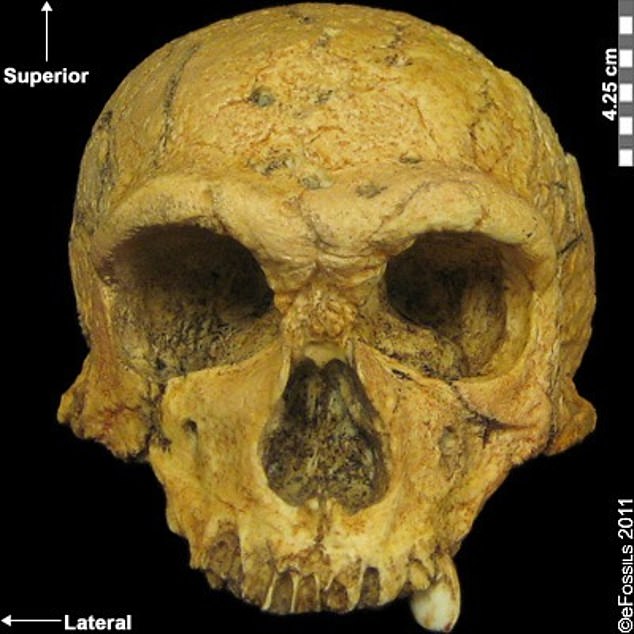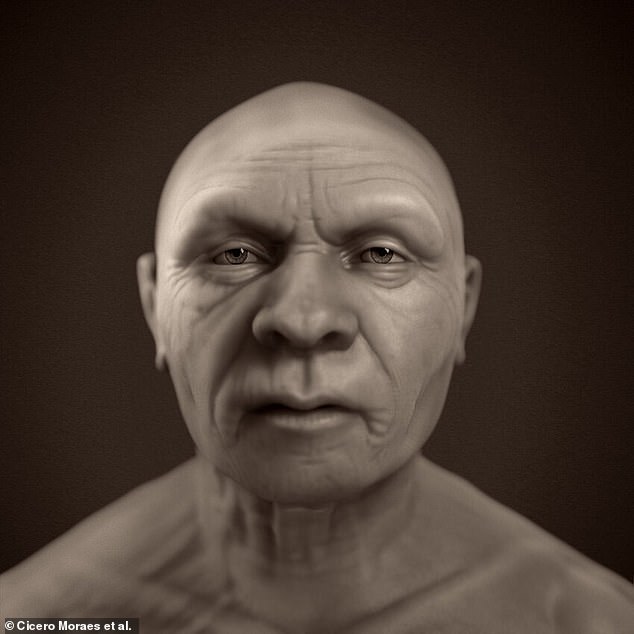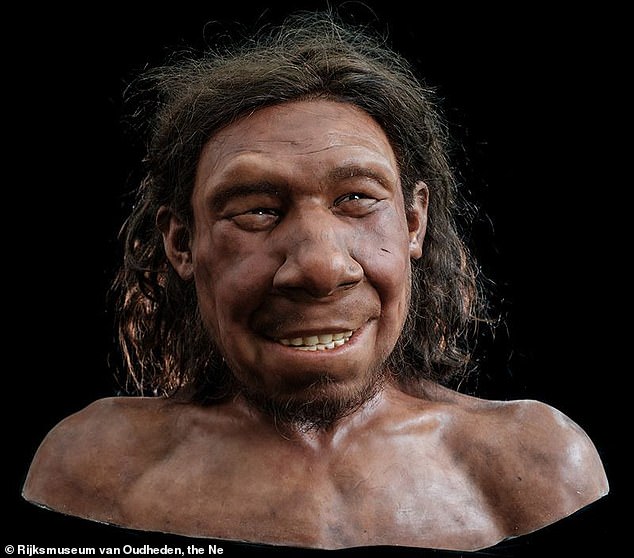‘Handsome face’ of Neanderthal man who died 56,000 years ago reveals a ‘softer side’ of the now-extinct species
Artist impressions of Neanderthals show the face protruding with a broad nose, but modern technology has revealed a ‘softer side’ to the now extinct species.
Researchers reconstructed the face of a man who lived 56,000 years ago using skeletal remains found in France 115 years ago. This revealed a ‘handsome’ old man with a long beard.
A Brazilian graphics expert who co-authored the study used computed tomography (CT) scans of the ancient skull and compared them to human skulls in a database with similar measurements to fill in the blanks.
The fossil suggests he suffered from severe periodontal disease, a gum disease found in mammals that experts believe “could be one of the first documented cases of zoonotic infectious disease spillover.”
Researchers have reconstructed the face of a man who lived 56,000 years ago using skeletal remains found in France 115 years ago. This revealed a ‘handsome’ old man with a long beard
Neanderthals were a species that lived alongside humans tens of thousands of years ago and were very similar in appearance and size, but were generally stockier and more muscular.
This primitive relative of humans existed for about 100,000 years—much of that time living with humans and reproducing with them—before going extinct about 40,00 years ago.
The skull, found at La Chappelle-aux-Saints in 1908, has a nearly complete lower jaw and skull that experts have determined shows ‘many ‘classic’ Neanderthal features, including a large, continuous brow ridge; a wide nasal opening; a long and ovoid foramen magnum; a relatively flat skull base (vs. modern humans); small mastoid processes; a long and low skull; and big jobs,” said eFossils.

The skull, found in La Chappelle-aux-Saints in 1908, has an almost complete lower jaw and skull that experts

A Brazilian graphics expert who co-authored the study used computed tomography (CT) scans of the ancient skull and compared them to human skulls in a database with similar measurements to fill in the blanks.
‘The fossil is often referred to as an ‘old man’ because he suffered from severe periodontal disease, joint degeneration or arthritis.
“This person’s ability to survive such serious ailments indicates that he likely had help from others.”
This skull helped a team of international researchers turn back time to see what Neanderthals looked like before they died.
co author Cícero Moraes, a Brazilian graphics expert, said Living Science: ‘We generated two images, one more objective with just the bust in sepia tone without hair and another more speculative (and) colorful with a beard and hair.
‘This image shows how Neanderthals were similar to us, but different at the same time, with more obvious quirks such as the absence of a chin, for example.
“Yet it’s impossible not to look at the statue and imagine what that person’s life was like thousands of years ago.”

The reconstruction of the ancient man differs greatly from another Neanderthal portrait shared in 2021 of a man named Krijm, who lived and died up to 70,000 years ago and had a peculiar facial deformity
The reconstruction of the ‘old man is vastly different from another Neanderthal portrait shared in 2021 of a man named Krijm, who lived and died up to 70,000 years ago and had a peculiar facial deformity.
Krijn, a young man with a ‘fairly sturdy build’ at the time of his death, had a noticeable lump above his right eyebrow – the result of a small tumor.
This particular tumor has never before been seen among the remains of Neanderthals and would likely have caused Krijn pain, swelling, headaches and even seizures, scientists claim.
But despite what would have been a painful growth of the tumor, Krijn was reconstructed with a cheerful smile.
During his lifetime, Krijn lived in Doggerland, an ancient land bridge that connected Britain to the rest of Europe more than 50,000 years ago.
